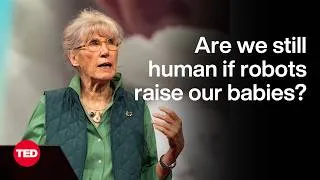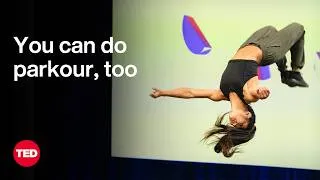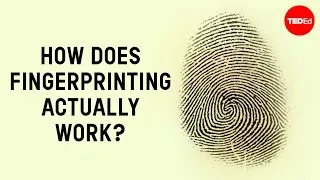请双击下面的英文字幕来播放视频。
翻译人员: Xinlong Zhang
校对人员: Kai Ma
00:06
You may know that it takes light
a zippy eight minutes
0
6794
3606
或许你知道太阳光从太阳表面
00:10
to reach us from the surface of the Sun,
1
10400
2723
到达地球需要8分钟
00:13
so how long do you think it takes light
2
13123
1933
但是你认为太阳光要多久
00:15
to travel from the Sun's core
to its surface?
3
15056
3397
从太阳中心到达太阳表面呢
几秒钟 顶多一分钟?
00:18
A few seconds or a minute at most?
4
18453
3086
00:21
Well, oddly enough, the answer
is many thousands of years.
5
21539
4438
扶好下巴 答案是需要好几千年
00:25
Here's why.
6
25977
1346
这里是解释
00:27
Photons are produced by the nuclear
reactions deep in the core of our Sun.
7
27323
4816
光子在太阳中心深处通过核反应产生
00:32
As the photons flow out of the core,
they interact with matter and lose energy,
8
32139
5425
光子从太阳中心流出
与物质相互作用损失能量
00:37
becoming longer wavelength forms of light.
9
37564
3398
形成波长更长的光波
00:40
They start out as gamma rays in the core,
10
40962
2675
光波在核心以伽马射线形式产生
00:43
but end up as x-rays, ultraviolet
or visible light as they near the surface.
11
43637
6324
但是在表面却衰减为X射线紫外线或者可见光
00:49
However, that journey
is neither simple nor direct.
12
49961
4395
然而过程十分复杂
00:54
Upon being born, each photon travels at
a speed of 300,000 kilometers per second
13
54356
7356
光子刚刚产生时候速度是每秒30万千米
01:01
until it collides with a proton
and is diverted in another direction,
14
61712
4909
直到它撞击到另一个光子并且改变方向
01:06
acting like a bullet ricocheting off
of every charged particle it strikes.
15
66621
4922
好比子弹一样
每次撞击改变一次方向
经过无数次撞击
01:11
The question of how far this photon gets
from the center of the Sun
16
71543
3844
光子到达表面到底要经过多久
01:15
after each collision
17
75387
1864
01:17
is known as the random walk problem.
18
77251
3081
就是一个随机漫步问题
01:20
The answer is given by this formula:
19
80332
2254
这个公式会告诉我们答案
01:22
distance equals step size times the square
root of the number of steps.
20
82586
5560
距离等于步长乘以步数的平方根
(一步指撞击间隔)
01:28
So if you were taking a random walk
from your front door
21
88146
3052
如果你从你家前门出发
01:31
with a one meter stride each second,
22
91198
2555
每秒走一米并且每次随机换一次方向
01:33
it would take you a million steps
and eleven days
23
93753
4082
会花费你11天时间 经过100万米的路程
01:37
just to travel one kilometer.
24
97835
2670
才能离开1千米远的距离
01:40
So then how long does it take for a photon
generated in the center of the sun
25
100505
4852
所以光子要用多久
才能从太阳中心到达地球
01:45
to reach you?
26
105357
1956
01:47
We know the mass of the Sun
27
107313
1742
我们知道太阳的质量
01:49
and can use that to calculate the number
of protons within it.
28
109055
4039
可以通过质量计算光子的数量
01:53
Let's assume for a second that all
the Sun's protons are evenly spread out,
29
113094
4884
不妨假设这一秒钟内光子均匀扩散
01:57
making the average distance between them
about 1.0 x 10^-10 meters.
30
117978
6876
假设它们每次传播0.1纳米的距离
02:04
To random walk the 690,000 kilometers
from the core to the solar surface
31
124854
6295
从太阳核心到表面是69万千米的距离
02:11
would then require 3.9 x 10^37 steps,
32
131149
6581
用随机漫步的话3.9X10^37步
02:17
giving a total travel time
of 400 billion years.
33
137730
4659
大概需要4千亿年的时间
02:22
Hmm, that can't be right.
34
142389
2273
桥豆麻袋 这不科学啊
02:24
The Sun is only 4.6 billion years old,
so what went wrong?
35
144662
4052
太阳公公才460万岁好嘛
所以一定是哪里出问题了
02:28
Two things:
36
148714
1541
这里有两点
02:30
The Sun isn't actually of uniform density
37
150255
2792
第一 太阳并不是均匀的
02:33
and photons will miss quite a few protons
between every collision.
38
153047
5388
第二 每次撞击之间光子会失去一些质子
02:38
In actuality, a photon's energy,
39
158435
2644
实际上 在这个过程中
02:41
which changes over
the course of its journey,
40
161079
2632
光子的能量是在不断变化的
02:43
determines how likely it is
to interact with a proton.
41
163711
3493
并且能量决定着与质子反应的可能性
02:47
On the density question,
42
167204
1586
在密度这个问题上
02:48
our models show that the Sun
has a hot core,
43
168790
2917
我们假设的是
02:51
where the fusion reactions occur.
44
171707
2356
溶解反应在太阳的核心中发生
02:54
Surrounding that is the radiative zone,
45
174063
2490
围绕核心的是辐射传播区域
02:56
followed by the convective zone,
which extends all the way to the surface.
46
176553
4866
再其外是通向表面的对流区域
03:01
The material in the core
is much denser than lead,
47
181419
3577
核心的物质比金属铅还要密集
03:04
while the hot plasma near the surface
is a million times less dense
48
184996
4625
表面附近的连续密度等离子体
03:09
with a continuum of densities in between.
49
189621
2761
相比之下稀疏了100万倍
03:12
And here's the photon-energy relationship.
50
192382
3188
这是光子-能量的关系
03:15
For a photon that carries
a small amount of energy,
51
195570
3168
对于携带少量能量的光子而言
03:18
a proton is effectively huge,
52
198738
2614
质子的影响是巨大的
03:21
and it's much more likely to cause
the photon to ricochet.
53
201352
3532
很可能引起光子的反弹
03:24
And for a high-energy photon,
the opposite is true.
54
204884
3779
对于携带大量能量的光子而言
03:28
Protons are effectively tiny.
55
208663
2032
质子的影响就很微小
03:30
Photons start off at very high energies
56
210695
2827
光子出发时相对于到达表面时候而言
03:33
compared to when they're finally radiated
from the Sun's surface.
57
213522
3479
携带大量的能量
03:37
Now when we use a computer
and a sophisticated solar interior model
58
217001
5098
现在我们用电脑运算一下先进的太阳内部模型
03:42
to calculate the random walk equation
with these changing quantities,
59
222099
4365
计算出随机路程中数量的变化
03:46
it spits out the following number:
170,000 years.
60
226464
5972
答案是17万年
03:52
Future discoveries about the Sun
may refine this number further,
61
232436
4296
未来的发现也许会精确这个数字
03:56
but for now,
to the best of our understanding,
62
236732
2833
但是现在我们最好的理解是
03:59
the light that's hitting your eyes today
63
239565
2348
今天我们看到的阳光
04:01
spent 170,000 years pinballing its way
towards the Sun's surface,
64
241913
5649
经历了17万年跌跌撞撞的路途
04:07
plus eight miniscule minutes in space.
65
247562
3051
别忘了还要再加上8分钟的太空之旅
04:10
In other words, that photon
began its journey two ice ages ago,
66
250613
5115
也就是说 在两个冰河世纪之前
人类刚开始穿衣服的时候
04:15
around the same time when humans
first started wearing clothes.
67
255728
4706
今天的阳光就已经启程了
New videos
关于本网站
这个网站将向你介绍对学习英语有用的YouTube视频。你将看到来自世界各地的一流教师教授的英语课程。双击每个视频页面上显示的英文字幕,即可从那里播放视频。字幕会随着视频的播放而同步滚动。如果你有任何意见或要求,请使用此联系表与我们联系。







